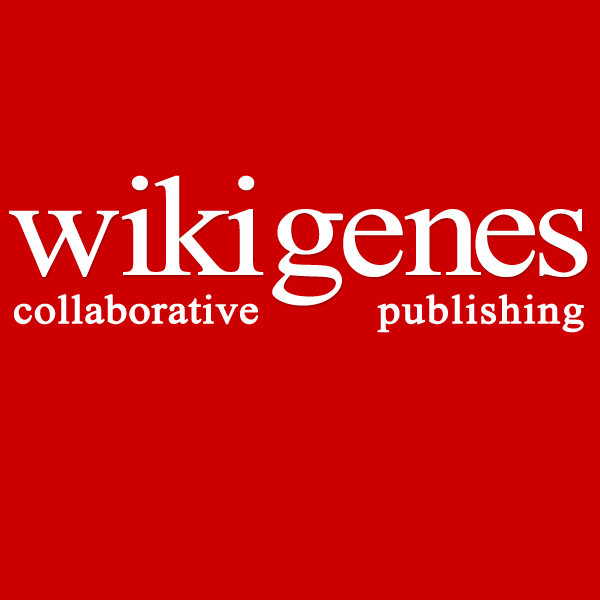Gene Review:
Nfatc1 - nuclear factor of activated T cells,...
Mus musculus
Synonyms:
2210017P03Rik, AI449492, AV076380, NF-ATc, NF-ATc1, ...
- Foxp1 regulates cardiac outflow tract, endocardial cushion morphogenesis and myocyte proliferation and maturation. Wang, B., Weidenfeld, J., Lu, M.M., Maika, S., Kuziel, W.A., Morrisey, E.E., Tucker, P.W. Development (2004)
- NFAT dysregulation by increased dosage of DSCR1 and DYRK1A on chromosome 21. Arron, J.R., Winslow, M.M., Polleri, A., Chang, C.P., Wu, H., Gao, X., Neilson, J.R., Chen, L., Heit, J.J., Kim, S.K., Yamasaki, N., Miyakawa, T., Francke, U., Graef, I.A., Crabtree, G.R. Nature (2006)
- Calcineurin/NFAT signaling in osteoblasts regulates bone mass. Winslow, M.M., Pan, M., Starbuck, M., Gallo, E.M., Deng, L., Karsenty, G., Crabtree, G.R. Dev. Cell (2006)
- Autoamplification of NFATc1 expression determines its essential role in bone homeostasis. Asagiri, M., Sato, K., Usami, T., Ochi, S., Nishina, H., Yoshida, H., Morita, I., Wagner, E.F., Mak, T.W., Serfling, E., Takayanagi, H. J. Exp. Med. (2005)
- The transcription factor NF-ATc is essential for cardiac valve formation. Ranger, A.M., Grusby, M.J., Hodge, M.R., Gravallese, E.M., de la Brousse, F.C., Hoey, T., Mickanin, C., Baldwin, H.S., Glimcher, L.H. Nature (1998)
- Nf1 has an essential role in endothelial cells. Gitler, A.D., Zhu, Y., Ismat, F.A., Lu, M.M., Yamauchi, Y., Parada, L.F., Epstein, J.A. Nat. Genet. (2003)
- Signals transduced by Ca(2+)/calcineurin and NFATc3/c4 pattern the developing vasculature. Graef, I.A., Chen, F., Chen, L., Kuo, A., Crabtree, G.R. Cell (2001)
- NFAT and Osterix cooperatively regulate bone formation. Koga, T., Matsui, Y., Asagiri, M., Kodama, T., de Crombrugghe, B., Nakashima, K., Takayanagi, H. Nat. Med. (2005)
- IGF-1 induces skeletal myocyte hypertrophy through calcineurin in association with GATA-2 and NF-ATc1. Musarò, A., McCullagh, K.J., Naya, F.J., Olson, E.N., Rosenthal, N. Nature (1999)
- Skeletal muscle hypertrophy is mediated by a Ca2+-dependent calcineurin signalling pathway. Semsarian, C., Wu, M.J., Ju, Y.K., Marciniec, T., Yeoh, T., Allen, D.G., Harvey, R.P., Graham, R.M. Nature (1999)
- Characterization of Nfatc1 regulation identifies an enhancer required for gene expression that is specific to pro-valve endocardial cells in the developing heart. Zhou, B., Wu, B., Tompkins, K.L., Boyer, K.L., Grindley, J.C., Baldwin, H.S. Development (2005)
- Regulation of the murine Nfatc1 gene by NFATc2. Zhou, B., Cron, R.Q., Wu, B., Genin, A., Wang, Z., Liu, S., Robson, P., Baldwin, H.S. J. Biol. Chem. (2002)
- Nuclear factor of activated T-cells (NFAT) rescues osteoclastogenesis in precursors lacking c-Fos. Matsuo, K., Galson, D.L., Zhao, C., Peng, L., Laplace, C., Wang, K.Z., Bachler, M.A., Amano, H., Aburatani, H., Ishikawa, H., Wagner, E.F. J. Biol. Chem. (2004)
- Regulation of the epithelial-mesenchymal transformation through gap junction channels in heart development. Nishii, K., Kumai, M., Shibata, Y. Trends Cardiovasc. Med. (2001)
- Delayed lymphoid repopulation with defects in IL-4-driven responses produced by inactivation of NF-ATc. Ranger, A.M., Hodge, M.R., Gravallese, E.M., Oukka, M., Davidson, L., Alt, F.W., de la Brousse, F.C., Hoey, T., Grusby, M., Glimcher, L.H. Immunity (1998)
- Characterization of the constitutive and inducible components of a T cell IL-4 activation responsive element. Tara, D., Weiss, D.L., Brown, M.A. J. Immunol. (1995)
- Nuclear factor of activated T cells 2 transactivation in mast cells: a novel isoform-specific transactivation domain confers unique FcepsilonRI responsiveness. Hock, M.B., Brown, M.A. J. Biol. Chem. (2003)
- A novel role of L-serine (L-Ser) for the expression of nuclear factor of activated T cells (NFAT)2 in receptor activator of nuclear factor kappaB ligand (RANKL)-induced osteoclastogenesis in vitro. Ogawa, T., Ishida-Kitagawa, N., Tanaka, A., Matsumoto, T., Hirouchi, T., Akimaru, M., Tanihara, M., Yogo, K., Takeya, T. J. Bone Miner. Metab. (2006)
- NFATc1 regulation of the human beta(3) integrin promoter in osteoclast differentiation. Crotti, T.N., Flannery, M., Walsh, N.C., Fleming, J.D., Goldring, S.R., McHugh, K.P. Gene (2006)
- Activity-dependent nuclear translocation and intranuclear distribution of NFATc in adult skeletal muscle fibers. Liu, Y., Cseresnyés, Z., Randall, W.R., Schneider, M.F. J. Cell Biol. (2001)
- Dysregulation of connexins and inactivation of NFATc1 in the cardiovascular system of Nkx2-5 null mutants. Dupays, L., Jarry-Guichard, T., Mazurais, D., Calmels, T., Izumo, S., Gros, D., Théveniau-Ruissy, M. J. Mol. Cell. Cardiol. (2005)
- Interleukin-4 inhibits RANKL-induced expression of NFATc1 and c-Fos: a possible mechanism for downregulation of osteoclastogenesis. Kamel Mohamed, S.G., Sugiyama, E., Shinoda, K., Hounoki, H., Taki, H., Maruyama, M., Miyahara, T., Kobayashi, M. Biochem. Biophys. Res. Commun. (2005)
- Regulation of Th2 cytokine expression in NKT cells: unconventional use of Stat6, GATA-3, and NFAT2. Wang, Z.Y., Kusam, S., Munugalavadla, V., Kapur, R., Brutkiewicz, R.R., Dent, A.L. J. Immunol. (2006)
- Matching of calcineurin activity to upstream effectors is critical for skeletal muscle fiber growth. Dunn, S.E., Chin, E.R., Michel, R.N. J. Cell Biol. (2000)
- Convergent signaling by acidosis and receptor activator of NF-kappaB ligand (RANKL) on the calcium/calcineurin/NFAT pathway in osteoclasts. Komarova, S.V., Pereverzev, A., Shum, J.W., Sims, S.M., Dixon, S.J. Proc. Natl. Acad. Sci. U.S.A. (2005)
- Morphine negatively regulates interferon-gamma promoter activity in activated murine T cells through two distinct cyclic AMP-dependent pathways. Wang, J., Barke, R.A., Charboneau, R., Loh, H.H., Roy, S. J. Biol. Chem. (2003)
- Cloning and chromosomal localization of the human and murine genes for the T-cell transcription factors NFATc and NFATp. Li, X., Ho, S.N., Luna, J., Giacalone, J., Thomas, D.J., Timmerman, L.A., Crabtree, G.R., Francke, U. Cytogenet. Cell Genet. (1995)
- RANK ligand signaling modulates the matrix metalloproteinase-9 gene expression during osteoclast differentiation. Sundaram, K., Nishimura, R., Senn, J., Youssef, R.F., London, S.D., Reddy, S.V. Exp. Cell Res. (2007)
- Molecular cloning and functional characterization of murine cDNA encoding transcription factor NFATc. Pan, S., Koyano-Nakagawa, N., Tsuruta, L., Amasaki, Y., Yokota, T., Mori, S., Arai, N., Arai, K. Biochem. Biophys. Res. Commun. (1997)









